
Hamed Hemmati
Pala Tribe
Director of IT

Pala Tribe
Director of IT
This monthly report will be delivered exclusively to our TribalHub Members’ inboxes every month; offering of-the-moment tips, hot industry topic discussion points, and snip-its of industry data. Additionally, our TribalHub Members will receive insights and conclusions drawn from current data and topics from the TribalNet Advisory Board members and other industry innovators and influencers.
Click here to sign in and read the latest edition.
Director of Casino Operations
Rolling Hills
Michael has been in the gaming industry for over 20 years working for numerous tribal gaming operations on the west coast and more recently Boyd Gaming in Las Vegas. He is currently the Director of Casino Operations at Rolling Hills Casino in Northern California.

CIO
Jamul Casino
Ram has more than 25 years of experience in IT and has worked at premier companies like Bell Labs, Compaq, Exodus Communications and AT&T wireless. Ram Patrachari is a forward looking IT entrepreneur with extensive experience in implementing and managing highly scalable information systems across a diverse portfolio. Prior to joining Viejas, Ram managed the enterprise devices segment at AT&T wireless. His responsibilities included rolling out state of the art wireless devices to the enterprise wireless segment.
Over the last three years he has been nominated for the San Diego Top Tech awards every year. In 2015 the IT team from Viejas which he leads won the Tribalnet Game Changers Technology award. In 2012, he was awarded the Top Tech Exec award by San Diego Magazine. In 2010, he was the recipient of the Information Technology Executive of the year award sponsored by the San Diego Business Journal. Also, in 2010 the Viejas Information Technology team won the 3rd Annual Tribal Technology Leadership award sponsored by Tribalnet.
Ram holds an MBA degree from Monmouth University and a Masters Degree in Electrical Engineering from Stevens Institute of Technology. Ram has also obtained credentials from the CIO Institute at UC Berkeley’s Haas School of Business and University of Chicago’s Kellogg school of business He is a certified PMP, CISSP and a Certified ScrumMaster. He is also a member of the IEEE Computer Society.

VP of IT/CIO
Seneca Gaming Corporation
Renita DiStefano is the Vice President of Information Technology/Chief Information Officer (CIO) for Seneca Resorts & Casinos. She is a member of the great Seneca Nation. In her role, Renita is responsible for driving the information security and technology strategy for three luxury casino and hotel properties in Western New York.

Senior Clinical Informatics Coordinator
Cherokee Nation Health Services
Lisa Lyon, MS, RN, CDE has been a nurse with Cherokee Nation for 23 years, with the last 14 being spent in Health IT. Lisa has served in several national roles and committees including ONC Health IT Fellowship, HIMSS Nursing Informatics Committee, is currently part of the HIMSS Nursing Informatics Networking and Education Taskforce and brings many years of Health IT expertise to the table. She is the Co-Chair of Nursing Informatics Education and on the AMIA-AHIC Committee. She is a graduate of the University of Colorado, obtaining a Master’s in Healthcare Informatics.

Chief Information Security and Privacy Officer
Indian Health Service, California Area Office
Reese Weber is the Chief Information Security and Privacy Officer for Indian Health Service at the California Area Office in Sacramento, CA. In this role, she works with Federal, Tribal and Urban healthcare facilities throughout California to improve their cybersecurity posture, technical infrastructure, privacy and security policies, and HIPAA compliance. In her 10 years at IHS, she served as both the System Administrator and Information System Security Officer (ISSO) before becoming the California Area Office CISO. Prior to joining Indian Health Service, she served as an ISSO for the Department of Defense, and before that, as a Technical Sergeant in the United States Air Force. Reese holds an MBA from Brandman University, a graduate certificate in Public and Non-Profit Leadership, a BBA in Information Systems, and the highest information security credential, Certified Information Systems Security Professional (CISSP). Her combined 20 years of civil service has given her a wide breadth of IT, security and leadership experience that lends to her passion and enthusiasm for all things cybersecurity. Reese has a mild (read: major) Disney obsession; and she loves traveling with her family.
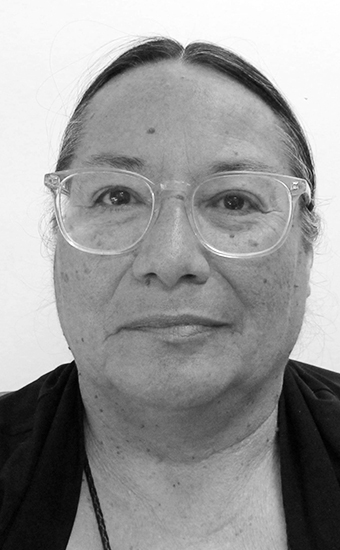
IT Database Administration Health Manager
Chickasaw Nation Medical Center
Sharon Postoak is Choctaw\Chickasaw\Mississippi Choctaw. She is currently located at the Chickasaw Nation Medical Center as the IT Database Administration Manager. She has worked for the Chickasaw Nation for 27 years. Sharon started as Technical Support for RPMS then moved on to create the first Service Desk/Call Center for the Nations IT support in 2000 as the Technical Support Manager. In 2005 she rejoined the RPMS Team and has been involved with many projects including DB Consolidation, Electronic Health Record, VistA Imaging and many third-party integrations.

Retired USPHS CDR
Indian Health Service (IHS)
Andrea Scott, MBA, BS (Retired USPHS CDR) currently serves as the Deputy Director/Deputy Chief Information Officer of the Office of Information Technology for the Indian Health Service (IHS). Andrea transitioned into this role 7 years ago and has held positions as a Clinical Applications Coordinator/Meaningful Use Coordinator, Acting Administrative Officer, Acting CEO, Microbiology/Medical Technologist, Laboratory Manager, Credentialing/Privileging Supervisor, and Information Technology Manager as past employment in the Phoenix, Navajo and Albuquerque Areas of IHS and the Carl Hayden VA Medical Center in Phoenix, Arizona. She has an MBA in Healthcare Management and a Bachelor of Science in Microbiology. Her civilian and PHS Commissioned Officer roles are a combined service of 30 years and were positions of clinical, administrative and technical responsibilities and leadership. She is an enrolled member of the Yavapai-Apache Nation and a descendant of the Navajo and Hopi Nations. Andrea’s current hobbies and interests are traveling, camping, running and cycling.

VP of IT
Sycuan Casino
Patrick Tinklenberg is the Vice President of Information Technology with Sycuan Casino where, for the last 9 years, he has been responsible for technology and strategy for the casino, hotel, and golf resort. Previously to this position, Patrick was the IT Director for the Barona Band of Mission Indians for 7 years where he ran the IT operations at all tribal government service facilities, government-supported enterprises, and the Barona Gaming Commission. A veteran of the IT industry for over 25 years, he has worked with companies in Transportation, Medicine, Real Estate, Government, Manufacturing, and Retail to align business objectives with technology.
Since joining the Tribal IT industry in 2005 he has facilitated projects across all areas of government and casino operations. As a gaming operations executive, he has been instrumental in the implementation of innovative loyalty programs, digital content management systems, CRM, and a number of strategic infrastructure initiatives. His other accomplishments as a Tribal technology executive include reservation-wide wireless broadband, GIS mapping, electronic document management, implementation of citizen service platforms, and unified communications.

IT Sr. Account Manager
Chickasaw Nation
Virgil began his career in Gaming in 1989 with Resorts International. During his 15-year tenure, Resorts International became Sun International then Kerzner International with properties in Atlantic City, South Africa, Dubai, Mauritius, Mexico and the Bahamas. His career there included Accounting, Cage Operations, Marketing, Operations and Information Technology.
From 2004 until 2006, Virgil worked at Barona Resort and Casino in San Diego as the Business Analyst Supervisor. During his time at Barona, they were always were looking at bleeding edge technology which resulted in a very intense development and a mature SDLC. Virgil led the conversion from IGS to Bally’s ACSC at that property in 2004 which included typical IT tasks, such as vendor management, testing, hardware requirements, etc, but also included tasks from a business standpoint (i.e. operational and marketing settings, direct user training, etc.).
In 2006, Virgil started his tenure at the Chickasaw Nation as the “IT Director of Gaming and Hospitality Applications” (and then IT Executive Director of Gaming and Hospitality Applications). His responsibilities included the Gaming Applications team, Hospitality Applications Team, POS Applications Team, Surveillance Applications/Technical Team. As a leader within the Chickasaw Nation Information Technology department, there are Gaming, Non-Gaming, Hospitality, and Surveillance responsibilities as well that include strategic, technical and transformative decisions.
In 2016, Virgil took on a more technical role of IT Sr. Manager – Shared Services. His responsibilities included leading the entire Network, Server, Storage, Power Systems, Database Administration, Communication and Environmental teams that supported the entire Chickasaw Nation.
In November of 2018, Virgil went back to Gaming as the IT. Sr. Account Manager. He is the primary IT person for 21 individual gaming, hotel and retail properties.

Director of IT
Seven Feathers Casino Resort
John Cash Filippe is an accomplished Casino Executive with over 25 years of Casino IT experience. He has worked nationally and internationally for several properties, across many types of gaming, from commercial to tribal, and riverboat entertainment facilities. His unique style of management was featured in the book “The Tech Buzzkill; How top IT Leaders Fend Of the Tech “Buzz” to Focus on Business” by Gerry Robinson and Manish Sharma. He also is an author of two books awaiting release, Soulbraider, and Soulbraider a Saga of Future Past. He writes for several industry magazines focusing on leadership and trends, as well as authoring a weekly blog titled Vegas in the Morning.
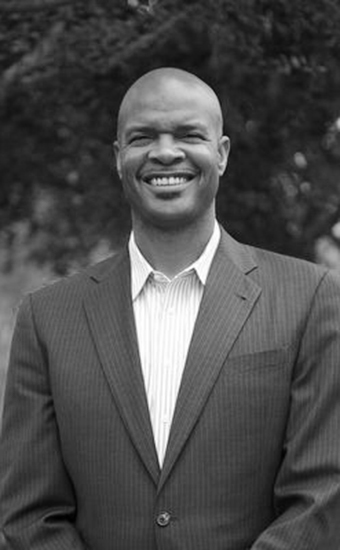
Chief Information Technology Officer
Santa Ynez Band of Chumash Indians
John Ormond has spent 19 years within the technology division of Chumash Enterprises. Starting as a support desk tech, John has held several positions in the Technology Services department leading to his current role of Chief Information Technology Officer for the Santa Ynez Band of Chumash Indians.
He is known in the gaming technology community to be a skilled practitioner in the strategic application of gaming technology.
John is a member of several professional organizations and holds certifications in multiple technology disciplines. He attended Morehouse College on a basketball scholarship and is also an accomplished musician.

General Manager
Elk Valley Casino and Founder at Disruptiv3Innovation.com
Matthew has worked in the casino industry for over 30 years, with leadership roles in poker, table games, and slots leading to his current role as General Manager for Elk Valley Casino on the Northern California coast. Currently, Matthew is involved in working with the Elk Valley Rancheria to build a brand new casino, which will open in 2022. Throughout his experience, Matthew has had an interest in mentoring and leadership development, which most recently culminated in a M.S. in Business Psychology from Franklin University in Ohio. Matthew also holds a B.A. degree from Ohio State University. Matthew enjoys consulting on business leadership, growth and development in Indian Country with Disruptiv3Innovation.com, a company he founded in early 2019. Disruptiv3Innovation.com develops growth and ascension planning for Tribal Members and property leaders within their own casino businesses. When not working, he enjoys spending time with his wife, three children, and two dogs at the beach or in the redwoods.

IT Director
Suquamish Tribe
Aaron Wheeler is the Information Technology Director for the Suquamish tribal government, located on the Port Madison Indian Reservation in the Central Puget Sound Region of Washington State. Aaron has been with the IT department for over 16 years and has been serving as its director since 2015. His background is a mix of business and IT, focusing on server infrastructure, design, and implementation.
Aaron leads a team of 8 IT technicians and engineers, who support and maintain the systems for the nearly 400 government employees. This includes the helpdesk, telecommunications, server and network infrastructure, cloud architecture, EHR structures, and an upcoming tribal broadband service. Aaron graduated in 2020 from Washington State University with his Executive Master’s in Business Administration and has a Bachelor of Science undergraduate degree in Information Technology Administrative Management from Central Washington University.
.

Fran Moore, Director of Information Systems, Wildhorse Resort & Casino
Moore is the Director of Information Technology at Wildhorse Resort & Casino which is owned and operated by the Confederated Tribes of the Umatilla Indian Reservation in Pendleton Oregon.
An Information Technology professional with over 25 years of executive level management experience. A well respected and proven leader in the gaming and hospitality industry.

CTO
Umpqua Indian Development Corporation & Seven Feathers Casino and Resort
My organization provides all IT support to the businesses inside the Cow Creek Band of Umpqua Indians. I have a staff of 20 Technologists over two different geographical locations supporting over 950 team members in the various diverse businesses. We support casino operations, resort operations, commercial colocation data center, working ranches, farm tractor sales, and agricultural operations.

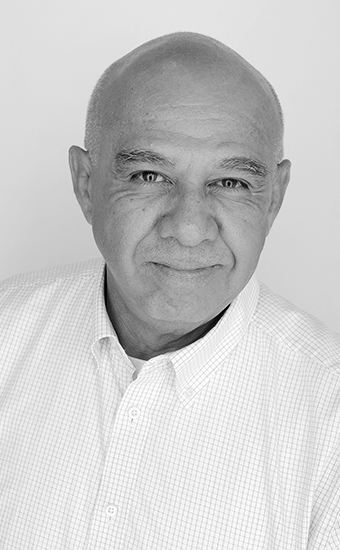
IT Director
Pascua Yaqui Tribe
Raul has over thirty years technology and leadership experience in diverse industries, including U.S. Navy, global electronics distribution, manufacturing, retail, and most recently 16 years in local government technology leadership. He headed efforts in implementing diverse technologies supporting assorted disciplines within local government, such as public safety & emergency management, legal & judicial, public works & economic development, finance, and education.
As IT Director for the Pascua Yaqui Tribe, Raul leads a department of 25 supporting and providing technology services to over 1,000 government employees across multiple locations of the 23,000 tribal members. Technology services include helpdesk, project management, telecommunications, procurement, programming, and infrastructure/outside plant.
The Pascua Yaqui Tribe is progressive and forward looking: the first to develop a Western Hemisphere Travel Initiative (WHTI) compliant Enhanced Tribal Card, as well as implementation of a Personal Identity Verification-Interoperable (PIV-I) card, both in collaboration with DHS/FEMA.

CIO
Casino Arizona/Talking Stick Resort
Mr. Santini’s tribal experience has been with the Salt River Pima Maricopa Indian Community in Scottsdale Arizona as their Chief Information Officer since 2009. His team oversees infrastructure, data security, data Center Operations, portfolio management, application, project management, providing desktop support and audio visual for all aspects of the gaming and non-gaming enterprise. Mr. Santini has extensive experience directing all aspects of IT and focuses on managing a cultural of change to create a professional environment based on mutual respect and open and consistent communications. Prior to Indian Gaming, Mr. Santini served 42 years in MIS, extensively with the “Big 5” major oil companies.
Prior to accepting a position at Casino Arizona centered in Information Technology, Financial Services, Strategic Planning, IT Project Office, Facilities Management and Procurement. Mr. Santini has held managing positions at Standard Oil of Ohio now BP, senior positions at Tosco, Phillips 66, ConocoPhillips and Alimentation Couche Tard (Circle K). The latter positions consisted of involvement in implementing retail automation solutions for approximately 5,000 convenience stores, truck stops, car care centers and assisting in acquisitions and divestitures as well as overseeing the disposition of the acquired/divested assets.
Mr. Santini holds a B.S. degree in Business Management, Information Services and a minor in Operations Research from Clarion University of Pennsylvania, formally known as Clarion State College, Clarion Pennsylvania.

Director of IT
Saginaw Chippewa Indian Tribe of Michigan
Amy Gates, Director of Information Technology for the Saginaw Chippewa Indian Tribe. Amy began her career in Tribal IT over 24 years ago and for the last 17 years has been the Director of IT. Amy is responsible for the overall vision and direction of technology for the Tribe as well as Soaring Eagle Casino & Resort, Saganing Eagles Landing Casino and Hotel, Soaring Eagle Waterpark and Hotel and Migizi Economic Development.
Amy has been an Advisory Board member of TribalNet for over 15 years and serves as an Advisory Board member for Gaming and Leisure Magazine. Amy holds a B.S. in Computer Science from Central Michigan University and a Master of Science in Cybersecurity Technologies from the University of Maryland Global Campus.

Director, Department of Information Technology, Cherokee Indian Hospital Authority
Eastern Band of Cherokee in NC
I am an enrolled member of the Eastern Band of Cherokee Indians. I am the Executive Director of Information Technology at Cherokee Indian Hospital Authority (CIHA).
I have been in IT Management since 1987 and a tribal employee since 2000. I have been the Executive Director of Information Technology at Cherokee Indian Hospital since early 2015. In six years we have grown our IT staff of from five to fifteen. In the course of six years we have moved our data center three times (typically a once in a career event). We built a new 75K square foot new hospital that opened in 2016 and have subsequently added a 60K mental health facility that opened last week. In 2017 our IT Team was given the IHS Excellence award. Our hospital has also taken over almost all of the tribe’s health departments including a 100 bed nursing home. We have been aggressive adopters of Telehealth starting in late 2015. We are also the first tribal “Managed Care” entity (MCO) in Indian Country.
Thanks to my hospital I have survived DM and a brain tumor I have been and am a fierce advocate for my tribe’s healthcare system. Perhaps the most important thing about me is I am Nadia’s husband, Kim’s dad and Kira and Ethan’s grandfather.

Director of Technology
Quinault Indian Nation
Jon Sutherland is the Director of Technology for the Quinault Indian Nation located on Washington’s Olympic Peninsula. Jon began serving in his position in December 2017. In addition to his current role, Jon also is part of the Quinault Indian Nation Ocean Fiber Task Force, which will bring the first transoceanic communications cables to the Washington coast in 25 years.
Jon has over 20 years experience in the IT industry. Prior to joining the Quinault Indian Nation, Jon was part of the Special Projects Group for Right! Systems, Inc., an Olympia, Washington-based technology consulting company, the IT Operations Manager for Exotic Metals Company in Seattle from July 2015 to December 2017, and the Support Services Manager for ImageSource, a content management software, from April 2010 to January 2015.
Jon is a graduate of Tumwater high school and holds over 15 certifications and licenses from ITIL, Microsoft, Oracle, and Cisco.
In Jon’s spare time he enjoys riding off-road vehicles in the Oregon Sand Dunes.
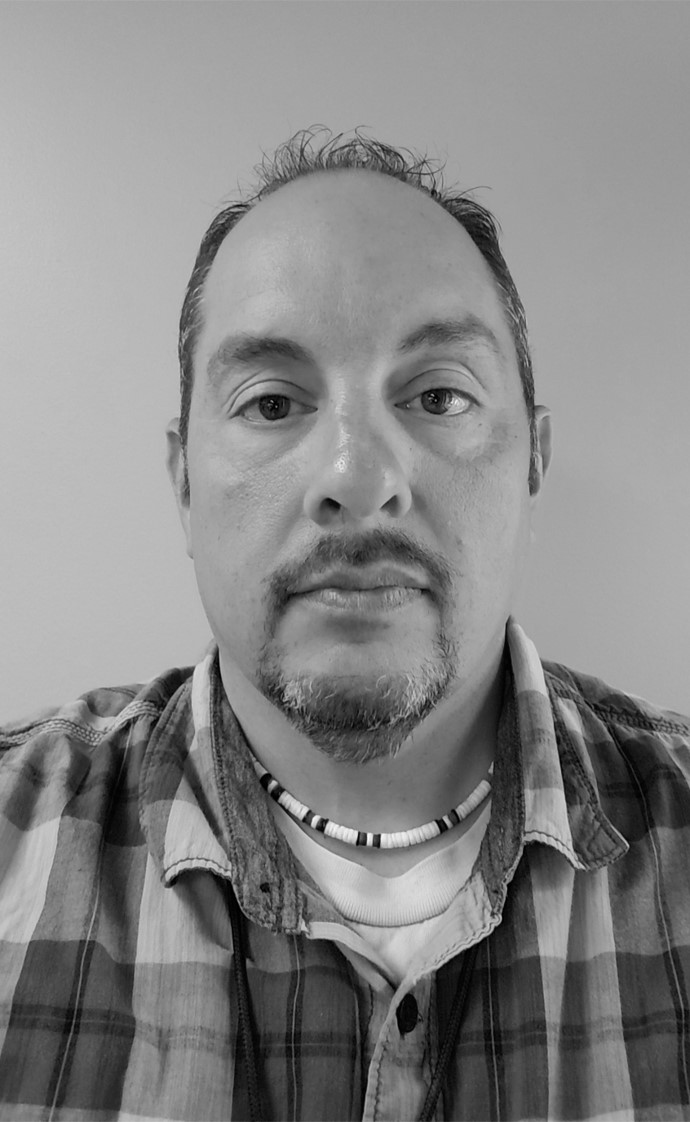
Information Technology Manager
Cherokee Nation – Information Technology Dept.
Jeff Carroll has been in the Technology Field for over 21 years. Jeff is currently serving in the role of Information Technology Manager for Cherokee Nation. Jeff started at Cherokee Nation in 1999 and has worked in many roles. Starting as a hardware technician, then Network Technician, Network Administrator and into present position of IT Manager. Jeff has also served on the board for Indian Capitol Technology Center for technology for the past 18 years. Jeff has also taught many IT classes for ICTC and Cherokee Nation Adult education programs. Jeff is also currently an adjunct Professor at Connors State College, teaching cyber security and intro to computers courses for the past 5 years. Jeff currently holds a Master’s of Science in Information Technology Management, a Bachelor of Science in Pre Law and many other IT certifications, including A+, N+, I-Net+ CTT+, CCNA, Axis Certified Professional, Genetec Certified Professional, Panduit Certified Professional and Certified Internet Webmaster Associate. Jeff also edits and is cohost of his own podcast.

IT Director of Government Services
Choctaw Nation of Oklahoma
John has over twenty years of unique experiences in technology across multiple technology sectors in a global environment. Heleads a diverse team for member service programs, which focuses on tribal government, the judicial branch, and education. John is actively serving on the Choctaw Nation’s steering committee for broadband services. He has a passion for the return-on-vision from tribal leadership, “Reliable and Affordable Broadband Access,” for our tribal communities.

Director of IT
Citizen Potawatomi Nation
Christopher Abel serves as the IT Director for the Citizen Potawatomi Nation where he has worked for over thirteen years. His passion for family and history drove him to seek out a position at the tribe where he is also a tribal member in the IT department for CPN in 2005. Starting as a network technician, Christopher has diligently worked his way up to recently be named Director.
Christopher has a passion for network and server engineering and has demonstrated such over his thirteen years at CPN. Christopher took the opportunity to move into management at the earliest chance he could and served as the manager for help desk services, server administration services, and network engineering. In 2016, Christopher was named Assistant Director of IT and continued his goals to be named Director in 2018.
Christopher has a passion for learning and continuing education as well as a passion for fixing things. He graduated from St. Gregory’s University in Shawnee, OK. in December of 2017 and from Mid-America Christian University in December of 2020 with a Bachelor’s of Science in Business Administration with a concentration in Management Information Systems.

Director of Finance
Little River Casino Resort
Dawn McGrady is a Tribal Member of the Sisseton-Wahpeton Sioux Tribe and holds a Bachelor’s degree in Business and a Master’s in Business Administration. Dawn has 25 years of gaming experience working in multiple Tribal casinos in North Dakota, South Dakota, Minnesota and currently in Michigan.

Director of Health Applications
Cherokee Nation Health Services
Toni Potts currently serves as Director of Health Applications in the Health Information Technology (Health IT ) Department for Cherokee Nation Health System, located in Tahlequah, OK. She works with a team of Clinical Applications Coordinators (CAC) configuring, maintaining and supporting the Cherokee Nation Electronic Health Record (EHR) and alongside the Health IT Team providing Health IT support to a network of ten health centers and one hospital throughout the Cherokee Nation.
Toni began her career with Indian Health Service (IHS) in 1995 at W.W. Hastings Indian Hospital, Tahlequah, OK, where she worked in various capacities, including Medical Records, Business Office and Health IT. She now brings more than 15 years of experience in providing support of an EHR. Toni holds a Bachelor’s Degree in Business Administration from Northeastern State University, Tahlequah, OK and certification as a Certified Professional in Healthcare Information and Management Systems (CPHIMS).
Online Gaming RFP templates, for anyone currently researching or preparing for real money online gaming, sports betting, online poker, mobile gaming or even a social casino. These documents are only accessible for TribalHub Members. Click HERE to sign in and download these files.
Review all the benefits available exclusively to our members here and make the TribalHub membership your most valuable tool today!

CIO/Executive Officer IT
Choctaw Nation
Jimmy Williams is the Executive Officer of IT for the Choctaw Nation of Oklahoma. He has over twenty years’ experience as a technology professional in various industries. Jimmy leads integrated IT functions supporting commerce/gaming, tribal government and health services. Jimmy holds a BS degree in CIS from SOSU and an MS degree in Management from ERAU. He is an Army veteran and a member of the Choctaw Nation.

U.S. Public Health Service, Director of Ancillary Services
Chickasaw Nation Department of Health
I am a commissioned officer of the United States Public Health Service, my clinical training is in pharmacy and I have spent the past twenty years working in tribal health systems in Oklahoma. I have interest in the areas of clinical informatics, health leadership and public health. I am a proud citizen of the Chickasaw Nation and very much enjoy helping others.

CIO
The Mohegan Tribe
Charles Scharnagle is the CIO for the tribal government of the Mohegan Indians of Connecticut based in Uncasville, Ct., which serves the interests of tribal members throughout the U.S. Chuck has spent the past thirty years in the high-tech, manufacturing and government environments including the headquarters for Black & Decker, Fruit of the Loom, EMC, Pegasystems and International Power America. Chuck’s experience includes implementing disaster recovery systems, redesigning computer centers and managing international support organizations.
In Chuck’s current role, he helped to create the Judge Scoring System (patent pending) which is a new way for MMA and boxing officials to score fights. Chuck then led the team to create and patent an app which allows fight fans to score their favorite fighter.
Chuck currently serves as a member on several boards including TribalNet – the industry resource for technology professionals in the Native American industry, the MS-ISSAC – the Multi-State Information Sharing and Analysis Centers and the CTC – the Connecticut Technology Council. Chuck holds a B.S. degree in Information Systems Management from the University of Maryland, Baltimore County and a Masters in Management from Loyola College in Baltimore, Maryland.
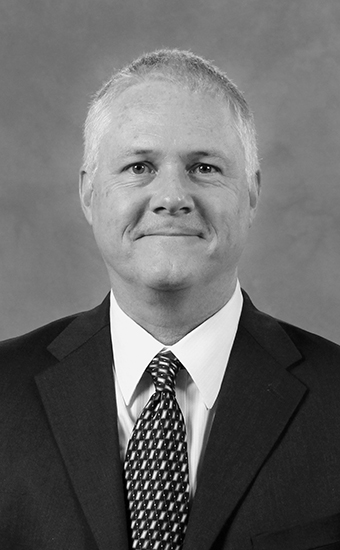
Chief Information Officer
Cherokee Nation
Jon has worked in the IT department for most of his 25+ years with the Cherokee Nation. Jon served the last seven years as the CIO of Information Technology and as the Executive Director prior to that. His strengths include: IT security, networking, routing, Microsoft domain architecture, data infrastructure, and engineering, Cisco VoIP as well as database programming in various languages and applications.
Jon has a Computer Science Degree from Northeastern State University located in Tahlequah, Oklahoma. Having served in the United States Air Force, he got his first exposure to mainframe computers in 1984 and has been working with computers and computer systems ever since. He is Vice President of the Oklahoma Native American Technology Council, a member of InfraGard, MS-ISAC, Tulsa CIO Forum, and various other organizations.
The Cherokee Nation headquarters is located in Tahlequah, Oklahoma. The Tribal Jurisdictional area of the Cherokee Nation covers over 7,000 square miles and a total of 14 counties in northeast Oklahoma. The wide area network strategically covers this area with support from over 65 staff in the Information Technology team. These staff members support over 3700 employees with all of their data and telecommunications needs.

Integrated Care Coordinator
Northwest Portland Area Indian Health Board
Katie Johnson graduated from the University of Kansas School of Pharmacy with a Pharm D in 2004. She then joined the United States Public Health Service as a Commissioned Corps Officer and completed an ASHP Pharmacy Practice Residency at Warm Springs Health and Wellness Center in 2005. She was able to start working with RPMS EHR and informatics during this time, as Warm Springs was an early adopter of RPMS EHR.
She continued to work with the Indian Health Service in Whiteriver Indian Hospital where she worked as both a pharmacist and Clinical Applications Coordinator, gaining experience implementing RPMS EHR in new settings (Emergency Room and Inpatient). She then moved to the Northwest Portland Area Indian Health Board in 2011 to take on Health IT policy initiatives and EHR support for the 43 Tribes in Oregon, Washington, and Idaho.

CEO
Skokomish Indian Tribal Enterprise, Inc.
David Owens began his gaming career in Las Vegas, Nevada in 1985, notably at Caesars Palace as a dice dealer from 1989 to 2000 and as a member of the opening management team of the Aladdin (now Planet Hollywood) in 2000. David relocated to Oklahoma in 2003, where he worked directly with Tribal Councils and gaming commissions developing and managing Tribal businesses and Casinos as a Casino General Manager, Director of Gaming and Vice President of Development. David is currently the CEO of Tribal Enterprises for the Skokomish Tribe of Washington.

VP of Information Technology
Grand Casinos
Eric has worked in IT for over 30 years, the last 20 years with Grand Casinos Mille Lacs and Hinckley. He and his team of 32 are responsible for keeping all Gaming, Hospitality, Infrastructure, and Back Office / Administrative systems running smoothly for 2 casinos, 5 hotels, 15+ Food & beverage venues and much more. Eric and his team also partner with the casinos operations teams to identify, evaluate, select, and implement new technologies that provide outstanding guest experiences, and streamline operations.
Eric is also the Chairperson for the Midwest Tribal Technology Council, a group of tribal IT leaders that have organized as a group to “Promote the common business interests, growth, and opportunity of information technology resources among tribal communities in the Midwest and to improve the business conditions for information technology resources among such tribal communities.”

Director of Team Member Relations
Win-River Resort & Casino
Christopher is the Director of Team Member Relations at Win-River Resort & Casino. He believes the fundamental purpose of HR is to improve the quality of life of every single person within an organization, both inside and outside the workplace. He’s passionate about purposeful leadership; listening to the needs of others, setting out to intentionally do good for others, and seeing the potential in someone to empower them to add something meaningful to our world. You can read more about Christopher’s thoughts on life and leadership by following along with him on Twitter.

Board Member Akwesasne Mohawk Casino Resort and Consultant VPS
Mr. Garrow has over forty years of IT experience in several industries. As a 20+ year veteran of the hospitality and gaming industry, Mr. Garrow served as Chief Information Officer in the management teams at Mohegan Sun, Turning Stone Casino, the Choctaw Casinos, and Baha Mar.
TribalHub has partnered with leading research teams to bring surveys and findings to our members.
To view the Tribal Organization Insights- 2018 Benchmarking Results released at TribalNet 2018, in partnership with Info-Tech Research Group- NATRC, click HERE.
To view the 2018 Tribal Government Benchmarking Survey- Deep Dive- Technology Skills Sets in Indian Country, released in partnership with Info-Tech Research Group- NATRC, click HERE.
To view the 2019 Tribal IT Spending & Staffing Assessment- 1-page survey summary, in partnership with Gartner, Inc. click HERE.
To view the 2019 Tribal IT Spending & Staffing Assessment- Deep Dive Report, in partnership with Gartner, Inc. click HERE.
To view the 2018 Tribal Government Benchmarking Survey- Deep Dive- Tribal Governance, released in partnership with Info-Tech Research Group- NATRC, click HERE.
Complete the latest industry survey to qualify. In partnership with Gartner, Inc., TribalHub is launching round two of their Tribal IT Spending and Staffing Assessment which will provide TribalHub members an even more comprehensive report detailing insights into key IT metrics. Our unique surveys and the resulting data are important current and on-going TribalHub initiatives. Complete aggregated results of this survey and all TribalHub data and surveys are available to TribalHub members. Complete this survey while in attendance at the 2019 TribalNet Tradeshow to qualify for a FREE snapshot summary of findings. Visit the Gartner, Inc. booth in order to complete this survey and be entered into a drawing to win a free prize.

Senior VP of Operations- Global Gaming Solutions
Chickasaw Nation
I got my start in the gaming industry more than 30 years ago working as a craps dealer and slot attendant in Atlantic City. Chickasaw Nation in Oklahoma marks the tenth tribe I have worked for in leadership roles, most recently serving as the Senior VP of Operations for their Global Gaming Group. My career has taken me across the country, having worked in New Jersey, Connecticut, Florida – where I worked on cruise ships – New Orleans, Detroit, Arizona, Las Vegas, Seattle, New Mexico, Califonia and now Oklahoma. My previous roles include serving as the general manager of casino operations / Chief Operating Officer for Sandia Resort & Casio in Albuquerque, New Mexico, general manager at Jena Choctaw Pines Casino in Dry Prong, Louisiana and Chief Gaming officer at Snoqualmie Casino in Washington. I also worked as the Chief Operating Officer for Sol Casinos in Tucson, Arizona, during a $122 million expansion. In addition, I served as Chief Operating Officer at Acres 4.0 in Las Vegas, a leading gaming technology firm, and Vice President of casino operations for the five-star property The Greenbrier in West Virginia, a more than 200-year-old historical resort.
Microsoft educational workshops come in a wide variety ranging from 1-5 day engagements that can be delivered onsite at your location, delivered remotely exclusively for your team, delivered remotely or with open enrollment along-side other customers. Workshops are deep technical training on specific Microsoft workloads and issues. Click here to see a sample of the technical delivery overview for one of our most popular Workshops. A complete list of currently available Premier Workshops is available upon request.
RAP as a Service is a proactive service delivered by a Microsoft accredited engineer to diagnose potential issues with your environment on the Microsoft technology of your choice. It is an automated assessment of a Microsoft technology implementation, with data collected and analyzed remotely by Microsoft to create a finding report on the health of your environment and remediation recommendations. Generic services are placeholder services for the technology of your choice. Click here to see a sample of the technical delivery for one of our most popular Risk Assessments for Active Directory. Click here to download the Risk Assessment PDF. A complete list of currently available Premier Risk Assessments is available upon request.
In the event a technical issue arises, your Premier Support team ensures you receive the priority support you need for a quick recovery from a Microsoft Engineer. Problem resolution services ensure that your critical issues receive our attention until they are resolved — and your business is up and running. Your IT staff can spend less time putting out fires and more time helping to maximize the productive use of your technology. PRS Support includes:
Think about what it would cost you to engage an expert on Azure, Exchange, or any technology to come in and help you. You would have to find a partner, purchase a minimum of their time, and go through your procurement process all to simply set up an advisory call to see if this is the direction you want to go and get some guidance. With the Advisory Package, you receive a Technical Account Manager that can find resources for you and schedule advisory calls on a per hour basis with Microsoft subject matter expert on any specific technology. Rather than getting the funding for each specific call, you can now use your current hours to engage with an expert and not have to worry about the procurement process for each request.
Think about what it would cost you to engage an expert on Azure, Exchange, or any technology to come in and help you. You would have to find a partner, purchase a minimum of their time, and go through your procurement process all to simply set up an advisory call to see if this is the direction you want to go and get some guidance. With the Taste of Premier Package, you receive a Technical Account Manager that can find resources for you and schedule advisory calls on a per hour basis with Microsoft subject matter expert on any specific technology. Rather than getting the funding for each specific call, you can now use your current hours to engage with an expert and not have to worry about the procurement process for each request.
Microsoft Premier Services are not just a reactive service for when business critical IT functions go wrong—it is Lifecycle Management service designed for prevention, planning, and optimization. This is what we refer to as Services Management and is the base of our methodology that focuses on the larger picture of how our technology fits within your business environment.
Support Assistance hours are Proactive hours that can be used towards hundreds of specialized Educational, Operational and Assessment based Microsoft offerings to deliver strategic value to your staff. Proactive Services are designed to find and address problems before they disrupt critical business processes; increase operational efficiency; reduce downtime; provide planning, migration and design reviews for smoother, upgrades, migrations and daily operations; educate staff to increase technical expertise and efficiency; and free up IT staff to focus on strategic business initiatives rather than reactive disruptions to business.
Yes! Microsoft’s Premier Support catalogue is constantly evolving to provide the growing support services that our customers need to cover their on premises, Cloud and hybrid environments. Beyond the brief overview provided above, Microsoft’s Premier catalogue includes over 700 educational, assessment, operational, development, cloud, remote, onsite and customized engagements to meet the unique requirements of our Enterprise customers. If you have additional inquiries about specific support needs, please reach out to Bradley Fulp at Microsoft to find the right Premier Support offering for your needs, including custom offerings.
Microsoft Health Check provides critical insight into the health, consistency and performance of elected Microsoft technology. This multi-day engagement leverages the expertise of Microsoft’s Premier Field Engineers, who use tools to collect data and server metrics to analyze key aspects of your deployment. Analysis is focused on maximizing scalability, reliability, performance and health following Microsoft best practices. Relevant settings are verified as consistent across the farm for the given hardware in use, thus allowing you to extract the most for your investment. Health Checks are delivered as a highly interactive engagement, complete with documentation, reports, and prescriptive guidance from a Microsoft Engineer based on the reported findings. Although the engagement involves a considerable amount of knowledge transfer, it is not a training course. Click here to see a sample of the technical delivery overview for one of our most popular Health Checks. A complete list of currently available Premier Health Checks is available upon request.
As the tools and techniques employed in modern credential theft attacks evolve, attackers are finding it easier to achieve their goals through widely known and commonly used attack vectors. Credential theft and reuse as a means for lateral movement between systems is arguably the most commonly used vector in most organizational compromises. This Proactive Operations Program (POP) will teach attendees a defense-in-depth strategy to guard against lateral traversal, a key aspect of this attack technique. Proactive Operations Program – Securing Lateral Account Movement (POP-SLAM) is a three-day engagement with a Microsoft Premier Field Engineer working alongside the customer’s security and Active Directory staff. The deliverables will consist of training, knowledge transfer and implementation of the recommended mitigations in a customer provided lab. Optionally, a customer may choose to perform a basic implementation in their production environment after testing in a lab environment. Click here to see a sample of the technical delivery overview for Microsoft’s Cyber threat reduction PoP-SLAM. A complete list of currently available Premier Pop-SLAMs is available upon request.
With Premier Services you will be assigned a Microsoft Premier Technical Account Manager (TAM) who acts as a trusted business advisor for your environment and aligns to your priorities to maximize the business value of your Microsoft investment. TAMs are Microsoft Certified Professionals who have immense understanding of Microsoft Operating Environments and who also understand your business priorities, the role Microsoft products play in your organization, and will help you plan to prevent problems and reduce your support costs. TAMs are responsible for delivering the service levels purchased in your Premier agreement both for proactive engagements you’d like to schedule and for reactive cases when you need help prioritizing, escalating, coordinating and getting to the right Microsoft resource to have the issue resolved. They are your advocate and advisor throughout the contract life-cycle to ensure you receive the total value of Premier.

Clinical Informatics Consultant
BCMA Federal Lead, BCMA Training and Deployment IHS Office of Information Technology
Captain Taylor (ret.) is a retired Commissioned Officer in the United States Public Health Service and is a certified physician assistant, registered pharmacist, and registered nurse. He holds more than 42 years of public health, clinical, and clinic-administrative experience in the IHS as both a commissioned Officer and Federal Employee. Mr. Taylor has served as a pharmacist, physician assistant, quality manager, risk manager, and compliance officer for the Pine Ridge, South Dakota, and Cherokee, North Carolina Indian Hospitals. He has also served as an HIV/AIDS/STD consultant, performance improvement consultant, pharmacy consultant, diabetes clinical consultant, and RPMS health informatics consultant for the Nashville area Indian Health Service. Since 2002, Mr. Taylor has been assigned to the Indian Health Service Office of Information Technology as a National MedicalInformatics Consultant and has been charged with both training and deployment of the Meaningful Use of an Electronic Health Record throughout the entire Indian Health Care system. David was awarded the PHS Meritorious Service Medal in recognition for his accomplishments in the EHR arena during his Commission.
Login to access the IT Policies and Procedures Index.

Director of Technical Services
Win-River Resort & Casino
Christopher DeCamp has worked in the IT industry since 1996, serving in roles ranging from technical, engineering, management, and executive management. Christopher has been a part of the Win-River Resort Casino team since July of 2006. In his current position, Christopher serves as the director of technical services for Win-River Resort Casino, in this role his responsibilities are directing the information technology, facilities, and housekeeping divisions as well as capital project management and construction management.

CEO
American Indian Health and Family Services
Ashley Tuomi is a member of the Confederated Tribes of Grand Ronde in Oregon. She grew up in a military family traveling around the United States. When she returned to Oregon, she became very active with her tribe and participated in tribal royalty for seven years. This experience became the stepping stone to her career serving the health needs of the American Indian/Alaska Native population. She graduated from Portland State University with a Bachelor of Science in Sociology while working as a Certified Nursing Assistant at a nursing home. She then went on to get her Master of Health Policy and Administration from Washington State University. During the summer she interned with the Centers for Disease Control and Prevention working with American Indian/Alaska Native grantees. She used this experience and completed her thesis on Secondary Prevention of Diabetes Complications in AI/AN members from the Eastern Band of Cherokee and tribes in Oklahoma. Recently Ashley graduated from A.T Still University with a Doctorate in Health Sciences.
She currently serves as the Chief Executive Office of American Indian Health and Family Services of Southeastern Michigan in Detroit Michigan. She has worked in Indian Health since 2007 in both Urban and Tribal Centers. Ashley is also a board member of the National Council of Urban Indian Health and serves in many other leadership roles with the American Public Health Association and the Great Lakes Area Tribal Health Board. She enjoys working with RPMS and other technology in the clinic. She has also directed a national training program in RPMS for the Urban Indian Clinics throughout the U.S.
Booth space includes a 6 ft. draped table, 2 chairs, tabletop sign, waste basket. The Expo Kit will include options and pricing for upgrades such as carpet, furniture, electric, Wi-Fi, etc.
Booth selection: This process will happen in September. Sponsors can choose their booth. Exhibitor booths are assigned. The highest level of sponsorship receives the first chance to select a booth, and subsequently go in order of the date of registration. Sponsors will also be choosing their sponsored event at this time (see reg packet group A,B,C for more info). TribalNet will reach out to you when it is your turn, there is no need to reach out before then. If you have special requests we will try to accommodate; we do not guarantee your request will be filled.
A Floor Pass allows access to the tradeshow floor, only.
A Conference Pass gives you access to conference sessions, keynote speakers, meals (breakfast & lunch), food & drink at breaks provided during the day, the tradeshow floor & access to the bar/food on the tradeshow floor. You will be turned away from the above if you do not have the appropriate badge level.
A Meet & Greet Pass gets you access to the Monday evening meet & greet event that you won’t want to miss!
More badges and passes can be purchased as needed.
The Conference and Tradeshow is being held at the Gaylord Opryland Resort and Convention Center in Nashville, TN. Click HERE for more information.
The entire Sponsor / Exhibitor fee must be paid in full on or before October 1st. Payments made after October 1, 2019 that haven’t been coordinated & confirmed with TribalNet, will be assessed a 1.5% finance charge per month past due.
Checks should be sent to: TribalNet PO Box 2166 Portage, MI 49081.
Credit Cards call our office to make a credit card payment. 269-459-9890
ACH payment can be made by using the following information: ABA 021052053For credit to Account Number: 32735835
Lead retrieval will be available, more information to come.
Attendees at the 19th Annual TribalNet Conference and Tradeshow, received an abbreviated version of our 2018 Benchmarking Report. This snapshot uniquely segments comparable Native American organizations and points to key indicators and outcomes based on research done regarding the organizational structure of tribes.
Use the TribalHub Request to Connect to send a personal message to a point of contact. Your contact information (name and email) will be shared with the receiver where they can then reply to your email. Any misuse, spamming, harassing comments or unprofessional use are not allowed and will not be tolerated. If you have any questions please email us at [email protected]
2800 Opryland Drive, Nashville, TN 37214
P (615) 458-1330 F (615) 458-6942
TribalNet 2018 Speakers |
||||
| First Name | Last Name | Title | Company/Organization | Session |
| Zachary | Atherton-Ely | Associate General Counsel | Mille Lacs Corp Ventures | E-Sports and Fantasy Impact on Gaming |
| Dave | Bailey | CTO | ArcticIT | Blockchain Technology- Potential Uses Now and in the Future |
| Rehan | Bashir | Workshop: Incident Response- “it” just happened, now what? | SeNet International | Directory of Information Security Engineering |
| Orlando | Bowman | Program Supervisor II | Navajo Police Department | Digitizing the Law Enforcement and Judicial Division |
| Even | Brande | CEO | Handel IT | Data Analytics from an Academic Viewpoint |
| Fred | Brown | President | Quantum Services | Strategies for Getting and Keeping Your Best Workforce- the war for talent |
| Joe | Cadd | Client Partner Mobility Solutions | Verizon Wireless | Mobile Devices and Apps in Tribal Health |
| Leonika | Charging | Partner | Fredericks Peebles & Morgan, LLP | The Cloud for Tribes- data integrity, regulatory hurdles, hosted vs hybrid |
| Matt | Clay | Director of Health Services for the Pokagon Band and Senior Partner | Quantum Services and Pokagon Band | Strategies for Getting and Keeping Your Best Workforce- the war for talent |
| Robert | Coffey | Health IT Manager | Perkins Family Clinic, Iowa Tribe of Oklahoma | The Modern Health Informatics Workforce |
| Jennifer | Curtet | Professional Speaker, Author, Executive Coach, and On-Camera Host | Synergistic Training Solutions | Personal Leadership Fundamentals- leveraging motivational factors |
| Mike | Day | Founder and Executive Officer | TribalHub | Intersection of Leadership and Technology |
| Angie | Dobney | VP of Casino and Gaming Sales | Rainmaker | The Modern Hotel Room |
| Allyson | Doctor | General Manager | Mohawk Networks | Tribal Broadband, Community WiFi & Cellular Service |
| Izella | Dornell | Sr. Executive Partner | Gartner | IT Governance Audit- is your IT department aligned with the rest of your organization? |
| Nikki | Ducheneaux | Partner | Fredericks Peebles & Morgan, LLP | The Cloud for Tribes- data integrity, regulatory hurdles, hosted vs hybrid |
| Matthew | Duchesne | Chief, Office of Native Affairs and Policy | Federal Communications Commission | Tribal Broadband, Community WiFi & Cellular Service |
| Jermaine | Dykes | Sr. IT Project Manager | Mobilitie | Four Faces of Leadership |
| Michael | Engel | Corporate Vice President of Food, Beverage & Innovation works | Mille Lacs Corporate Ventures | Right sizing technology to ensure seamless integration |
| Matt | Engle | Commercial Insurance Broker | Cragin & Pike | Cyber Insurance Navigation |
| Patrick | Flannery | VP – Systems Tech Services | Arisocrat | Gaming Industry Titans Q&A |
| Ari | Fox | Co-Founder/CEO | Fox Marketing | E-Sports and Fantasy Impact on Gaming |
| Ben | Fox | Co-Founder/CEO | Fox Marketing | E-Sports and Fantasy Impact on Gaming |
| Jessica | Frank | Health Information Manager | Forest County Potawatomi | Mobile Devices and Apps in Tribal Health |
| Larry | Fretz | Practice Lead, NATRC | Info-Tech | Technology Policies and Procedures-baseline for any organization |
| Gus | Fritschie | CTO | SeNet International | Workshop: Incident Response- “it” just happened, now what? |
| Dan | Garrow | Board Member- St. Regis Mohawk Tribe and Consultant | VPS/The Hartman Group |
Snapshot of the Leadership Pipeline
|
| Kateri | Gill | Senior Program Specialist | MS-ISAC | Workshop: Cyber Security: Prevention & Information Sharing |
| Heidi | Hamers | Corporate VP of Marketing | Mille Lacs Corporate Ventures | Right sizing technology to ensure seamless integration |
| Scott | Hanson | VP of Table Games | Mille Lacs Corporate Ventures | Right sizing technology to ensure seamless integration |
| Brian | Jamison | Microsoft Technology Solution Professional | Microsoft | Security and Mobile Device/App Management |
| Curtis | Keliiaa | Senior Network Engineer | Sandia National Laboratories | IoT and Security |
| Ben | Keller | Sr. Vice President, Sales | KEYPR | The Modern Hotel Room |
| Stuart | Kerr | Senior Data Scientist | Pechanga Resort & Casino | Total Property Intelligence: A Real Life Pechanga Case Study |
| Eugene | Kipniss | Senior Program Specialist | MS-ISAC | Workshop: Cyber Security: Prevention & Information Sharing |
| Matt | Lane | CIO | JANUS Associates, Inc | Cyber Security: Breaking the Communication Barrier Between Technical and Non-technical Managers |
| Markus | Lassfolk | CTO | TrueSec Inc. | Ransomware – how to avoid it or recover from it |
| Craig | Lewis | Senior IT Services Manager | Software Engineering Institute – Carnegie Mellon University |
Security Awareness- employee engagement |
| Stephanie | Licata | Training & Development Specialist | SChange Ventures, LLC | Strategies for Effective Conflict Resolution |
| Neal | Logue | Health Insurance Specialist | Centers for Medicare & Medicaid Services | New Performance Interoperability (MU) |
| Michael | Lundie | Director of Healthcare Interoperability Solutions | Cognosante | Evolving Health Information Exchanges beyond Data Gathering and Information Dumping Systems |
| Christopher | Luter | CIO | Forest County Potawatomi Community | Security and Mobile Device/App Management |
| Andrew | Metcalfe | President and CEO | Native Network Inc. | Tribal Broadband, Community WiFi & Cellular Service |
| Frank | Murry | CEO | Cherokee Group Solutions | The Modern Hotel Room |
| John | Noriega | Senior Director & Client Accountable Executive | Cerner Corp | Getting the Most Out of Your EHR |
| Jen | Novitski | Clinical Solution Executive Lead | IBM Watson Health | Automated Communications and Care Management |
| Tim | O’Shea | The Agent Of Change | Tim O’Shea Enterprises | Change Never Dies! Overcoming resistance to change |
| Thom | Oaks | Technical Solution Specialist | Microsoft | Security and Mobile Device/App Management |
| Christopher | Orozco | Team Member Relations Manager | Win-River Resort & Casino | Creating a Culture of Leaders |
| Jody | Osbon | Director of Information Technology | Pokagon Band of Potawatomi | Ransomware – how to avoid it or recover from it |
| Joseph | Peters | Solution Engineer | Esri | Drones- new uses for tribal lands and facilities |
| Ed | Rangel | Director of IT Operations | Pearl River Resort | Sports Betting- where should you be in the process |
| Clair | Riley | Territory Manager | Matrix Imaging | Digitizing the Law Enforcement and Judicial Division |
| John | Salerno | Director of Operations and Compliance | USBookmaking | Sports Betting- where should you be in the process |
| Vic | Salerno | President | USBookmaking | Sports Betting- where should you be in the process |
| Patrick | Schwerdtfeger | Snapshot of the Leadership Pipeline | Trend Mastery, Inc | Embracing Disruptive Innovation |
| Darren | Simmons | SVP Payment Solutions | EVERI | Gaming Industry Titans Q&A |
| Bobby | Simpson | CIO | Finley & Cook | Blockchain Technology- Potential Uses Now and in the Future |
| Mitchell | Thornbrugh | Acting CIO | Indian Health Service | State of the Industry Overview- Tribal Health |
| Andrew | Trawick | CEO | Truvian Group | Workshop: Effective Meetings |
| Marcel | van Hulle | Senior Vice President | Info-Tech Research Group | Tribal Organization Insights- 2018 Benchmarking Results |
| Jason | Wesaw | Government Manager | Pokagon Band of Potawatomi | Ransomware – how to avoid it or recover from it |
| Troy | Wilkinson | CEO | Axiom Cyber Solutions | Cyber Insurance Navigation |
| Travis | Williams | Sr. Network Engineer | Pearl River Resort | Sports Betting- where should you be in the process |
| Brad | Worthley | President | Brad Worthley International | Conversational Charisma- mastering communication and relationships |
Directory Access includes a closer look at the departmental structures, sizes, key technologies in place, and more pivotal characteristics of other tribes, casinos, and health facilities. Access contact info for your peers and connect with them directly in a variety of departments throughout tribal government, gaming, and health organizations such as: IT, Tribal Council, Gaming Executives, Health IT, Finance, Human Resources, Marketing, and so many more!
Directory Access includes a closer look at the departmental structures, sizes, key technologies in place, and more pivotal characteristics of other tribes, casinos, and health facilities. Access contact info for your peers and connect with them directly in a variety of departments throughout tribal government, gaming, and health organizations such as: IT, Tribal Council, Gaming Executives, Health IT, Finance, Human Resources, Marketing, and so many more!

Director of IT
Avi Resort and Casino
Marlon Ortiz, Information Technology Professional. Creative professional with 20+ years of information technology knowledge in the gaming and hospitality industry. Highly skilled in information security, project management and planning with a strong background in data management, security, analytics and technical strategy. A proven leader who understands that the value of IT lies in delivering solutions to complex business problems within the Gaming and Hospitality Industry. A leadership style that emphasizes the development of people, processes and tools to achieve specific strategic business goals. Focused on connecting IT to other departments within the corporation and delivering effective solutions for business costs and operations. Marlon possess a Master’s in Cybersecurity and Information Assurance from The Pennsylvania State University, he also has the following security Certifications; CISSP, CISM, and Security+. Previously held high level IT Management positions at American Casino and Entertainment Properties, the Morongo Casino Resort & Spa, and Harrah’s Entertainment.

Director of IT
Santa Clara Development Corporation
Chris L. Baca has over 18 years of successful IT leadership experience. Chris gained this experience while managing IT operations for different agencies for the State of New Mexico. Baca is currently serving as the Director of Information Technology for the Santa Clara Development Corporation (SCDC). SCDC owns and operates the Santa Claran Resort, the Black Mesa Golf Club, the Puye Cliff Dwellings, the Santa Clara Travel Centers, and the Big Rock Bowling Center. Previously, as a member of the SCDC Board of Directors for 12 years, Baca was instrumental in the creation and upkeep of these businesses for the Pueblo. Baca currently is a member of the IPCC/IPMI Board of Directors, which is a five member board appointed by the 19 Pueblo Governors in the State of New Mexico. This board has oversight over the Indian Pueblo Cultural Center in Albuquerque New Mexico and the recently developed Avanyu Plaza.
Chris has earned a BA degree from the University of New Mexico. Chris and his wife Janice have two children, Jenyce and Jareth who both attend college at Northern New Mexico College.

Director of IT
Lac Courte Oreilles Band of Lake Superior Chippewa Indians
Michael Serio has been working for the Lac Courte Oreilles Band of Lake Superior Chippewa Indians for 6 years. He specializes in networking, but takes special pride in a talent he likes to call the Swiss Army Knife of IT; doing everything from help desk requests to project management for large tribal wide technology initiatives.
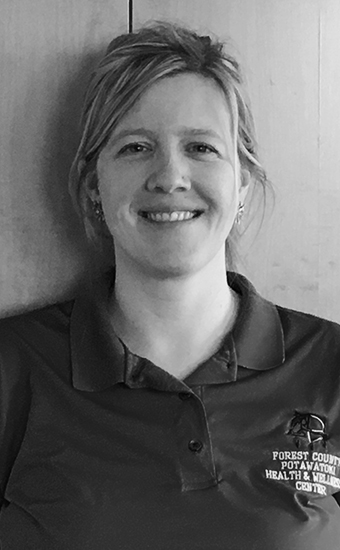
Clinical Applications and Data Manager
Forest County Potawatomi Health & Wellness Center
Andrea Storm is the Clinical Applications and Data Manager for the Forest County Potawatomi in Northern Wisconsin. She grew up in rural South Dakota and made her way to Madison, Wisconsin to attend graduate school. After spending several years in Madison working as a Project Manager with electronic health record implementations, she moved to the beautiful Northwoods of Wisconsin. While working at the Forest County Potawatomi Health and Wellness Center, Andrea has served as a clinical data analyst, meaningful use coordinator, and quality improvement manager. She has been involved with many projects including the implementation of new electronic health records and interfaces. Andrea enjoys collaborating with IT department and loves working in a health care setting.

Management Analyst
Phoenix Indian Medical Center
Doug McLemore is a proud member of the Cherokee Nation of Oklahoma and is currently a Management Analyst within the Information Management Department at the Phoenix Indian Medical Center (PIMC) in Phoenix, Arizona. PIMC is the largest federally operated Indian Hospital within the Indian Health Service. Mr. McLemore leads and consults on a multitude of technology initiatives including the development of many organization specific projects designed to improve technology in the healthcare environment.
Mr. McLemore began his IHS career in 2010 at the Colorado River Service Unit in Parker Arizona as an IT Specialists/Systems Administrator. Subsequent roles in IHS include Information Security Officer (ISSO) and Chief Information Officer (CIO) (a) at the Tucson Area Office, and Supervisory IT/Specialist at the Phoenix area office.
Prior to joining IHS Mr. McLemore spent 20 years in the private sector working in the Electric Utility Industry specializing in Geographic Information Systems (GIS), database development, and project management.
Mr. McLemore earned his Master’s in Information Assurance in 2007 and his BS in Business Information Systems in 2001. In addition, Mr. McLemore is a Certified Information Systems Security Professional (CISSP).

All shipping information can be found in the Expo Kit, please direct all questions about shipping to Las Vegas Expo Company.
Tradeshow Days & Times: Tuesday 11/6 from 2:15 – 6:00 & Wednesday 11/7 from 2:15 – 5:00
Tradeshow Setup: Monday 10am – 3pm & Tuesday 8am – 1pm
Tear down: Wednesday 5pm-7pm
Security: Overnight Security will be provided
Las Vegas Expo is our official expo company for TribalNet 2018. Download the Expo Kit.
Click here to watch the demonstration video and learn all the ways a TribalHub membership will give you and your organization an advantage!